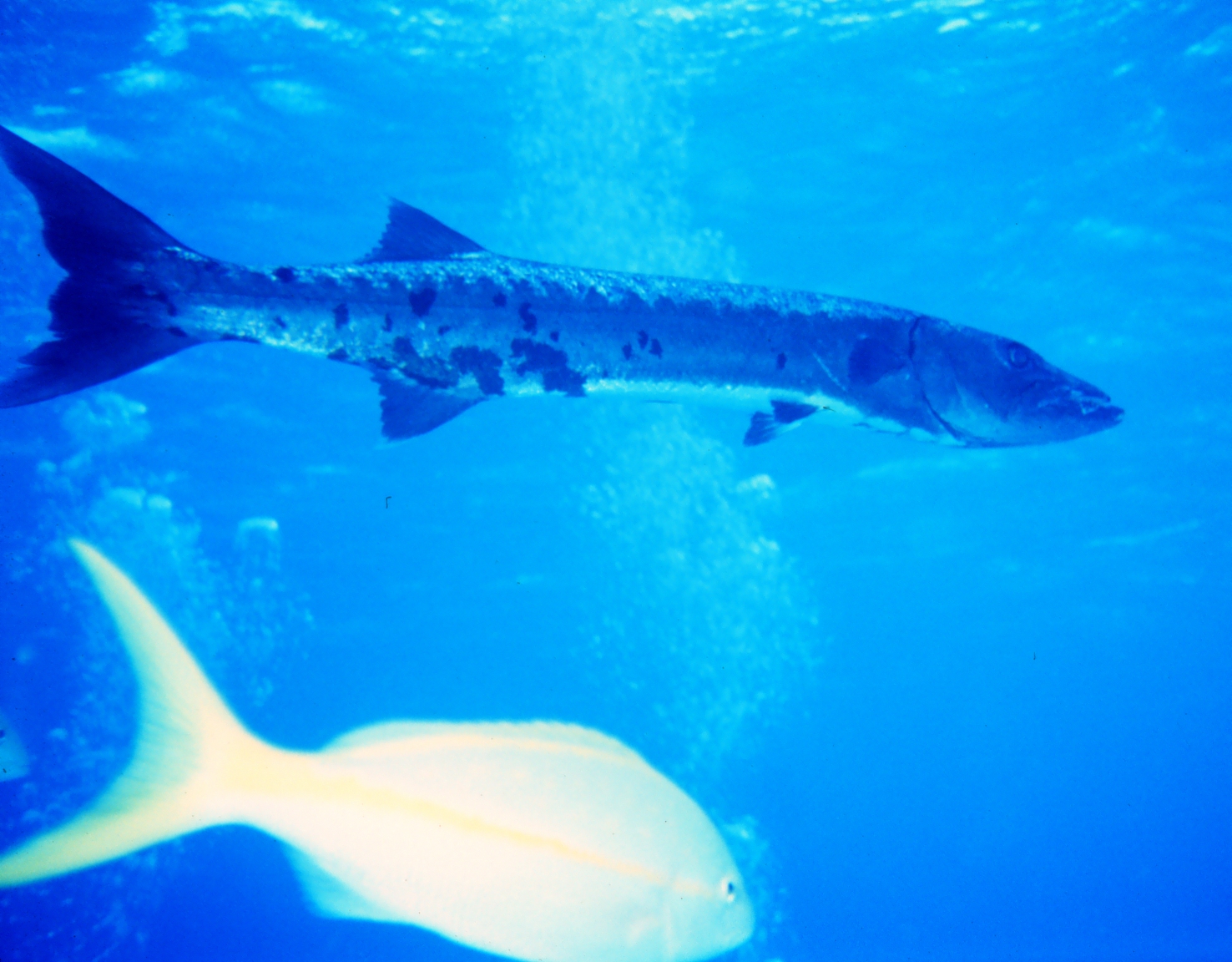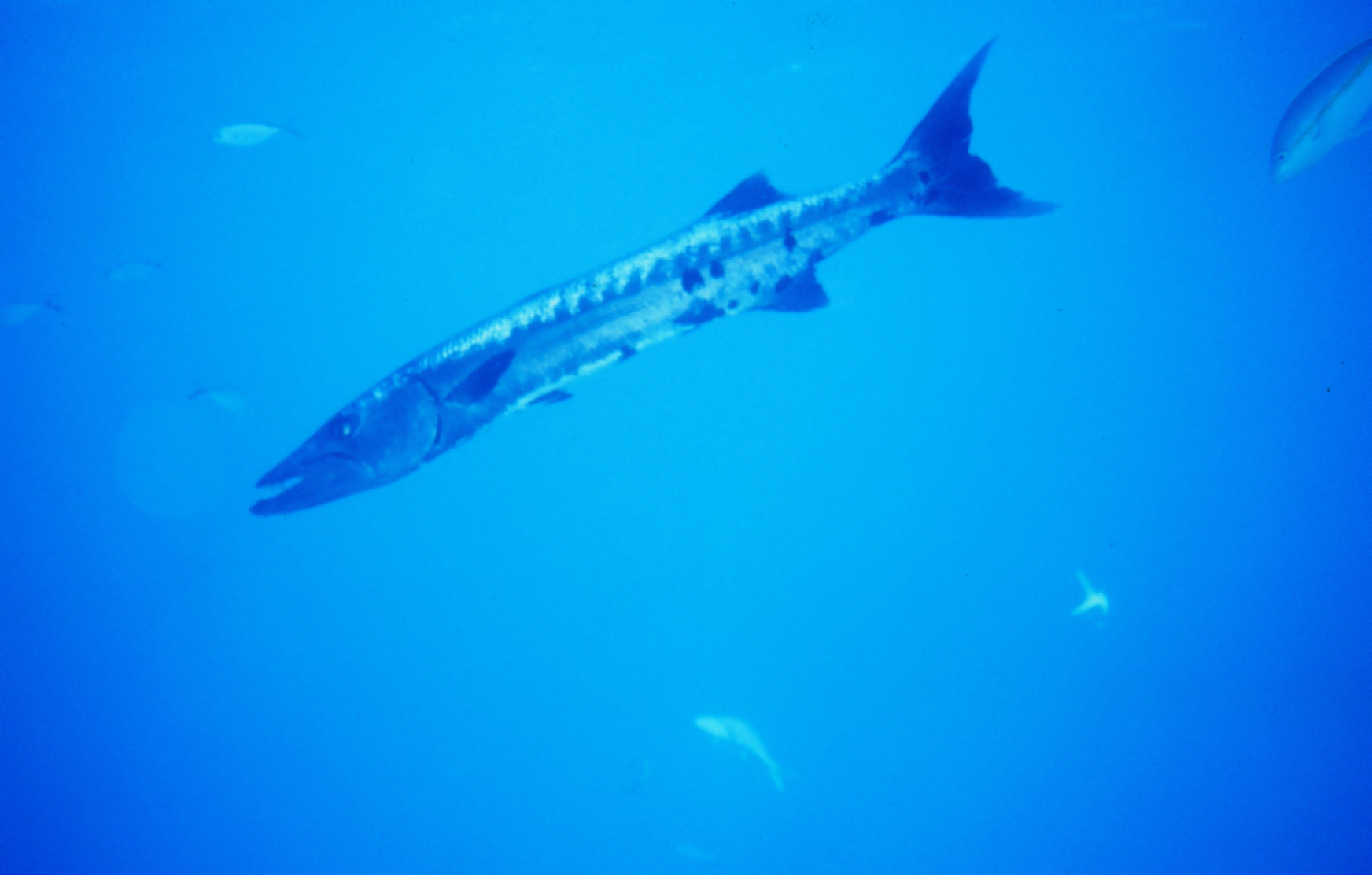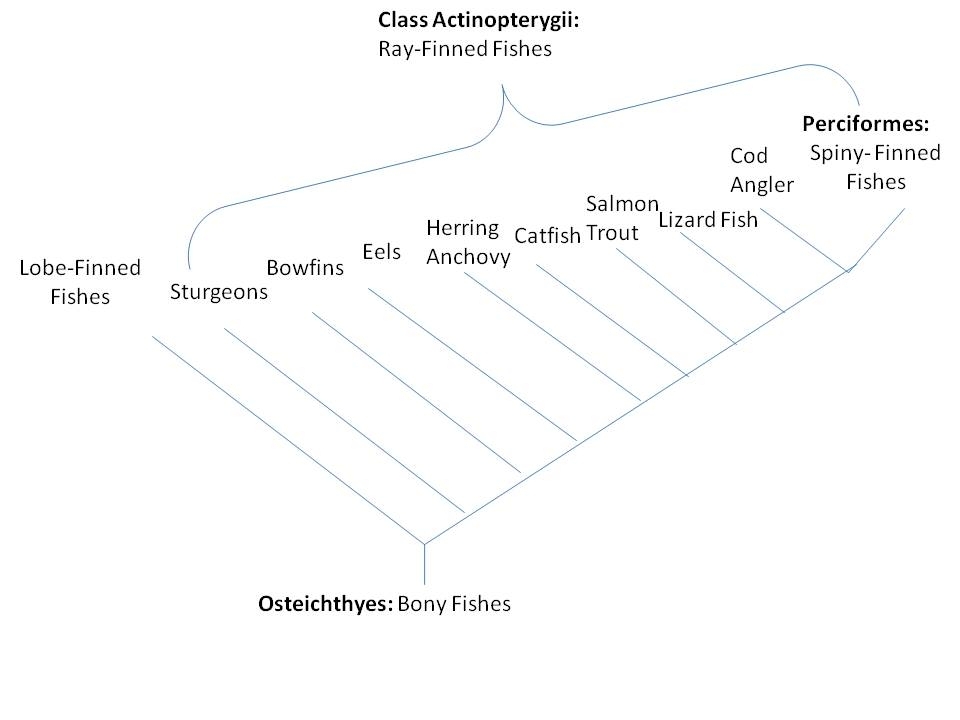
Imagine scuba diving in an exotic coral reef teeming with aquatic life;
clown fish dart in and out of anemones, jellyfish float lazily past, and
many brightly colored creatures swim through the coral. All this time there is another fish lurking near the
surface of the water, observing these activities and waiting for his
chance to strike. This is Sphyraena barracuda, commonly known as the great barracuda;
the dominant predator of coral reef environments who
attacks prey
at speeds
so swift the assault is over in the blink of an eye. The jaws of a great
barracuda have been described as a trap against which there is little
defense. This awesome predator can travel at speeds up to 40-58 kilometers
per hour, but between meals the barracuda mainly drifts slowly through his
environment, hardly expending any effort, giving him
 a
reputation of stealth and silence. Adult great barracudas have long, lean
bodies with a pointed head and large, gaping mouth. They are dark grey colored
on their top surface and shiny silver on the sides and
bellies. This coloring enhances their camouflage in the
shimmery blue ocean water. a
reputation of stealth and silence. Adult great barracudas have long, lean
bodies with a pointed head and large, gaping mouth. They are dark grey colored
on their top surface and shiny silver on the sides and
bellies. This coloring enhances their camouflage in the
shimmery blue ocean water.
The Sphyraena genus is the only
genus in the family Sphyraenidae, which includes 18 to 20
other barracuda species; all of these are predators and have fairly similar
morphological traits. The genus name Sphyraena comes from the root
word meaning “hammer,” and the species name barracuda actually
originated from a Caribbean
language. The taxonomy for the great barracuda has been changed many times,
having 17 different specific epithet names in the past 250 years. The full
classification for the great barracuda is:
Domain Eukarya: Cells have genetic material
contained in a nucleus and membrane bound organelles
Kingdom Animalia:
Multi-cellular, heterotrophic, no
cell wall
Phylum Chordata:
Bilaterally symmetrical,
notochord, tubular nerve chord, pharyngeal pouches, endostyle, post anal
tail
Subphylum Vertebrata:
Vertebral column,
endoskeleton with muscle attachment sites for movement
Infraphylum Gnathostomata:
Vertebrates with jaws
Superclass Osteichthyes:
Endoskeleton made up of
bone
Class Actinopterygii:
Fins have webs of skin
supported by bony rays attached to internal skeleton
Order Perciformes:
Dorsal and anal fins have both
anterior spiny rays and posterior soft rays
Family Sphyraenidae:
Includes only barracuda
species which are all predators and have same general morphology and life
cycle
Genus/Species:
Sphyraena barracuda, the largest of the barracuda species

Figure 1. Phylogenetic tree of common fish groups
Separations between different fish groups have been made
mostly based on morphological traits; however, Cladistics, or the study of
the course of evolution based on molecular and DNA evidence, has been
increasingly important in distinguishing between fish groups. The
phylogenetic tree in Figure 1 shows the breakdown of some well known fish
within the class Actinopterygii. This tree shows the split between the lobe-finned
fishes and ray-finned fishes. Ray-finned fishes are described as having thin
boney projections from the internal skeleton connected with webs of skin
which make up their fins. The tree also lists examples of fish from the
different orders of the Actinopterygii, the barracuda being in the
Perciformes order, or the spiny-finned fishes.
Click to read about
The Great Barracuda's life history and habitat!
|

